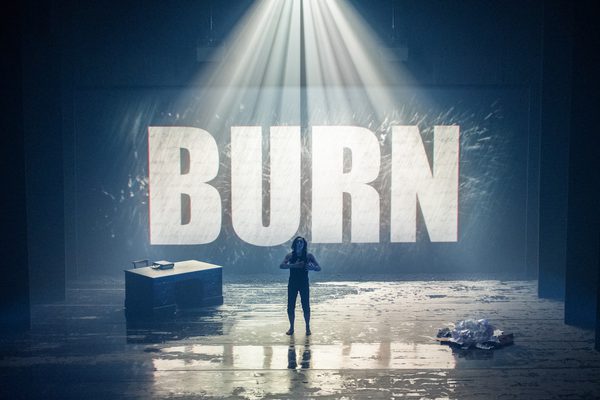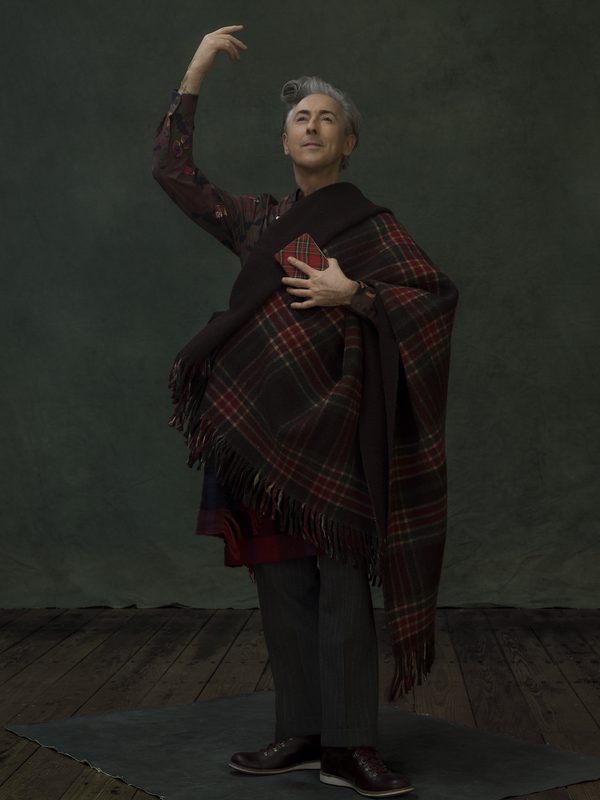News Story
“I have become completely obsessed with what it must have been like to be him,” says Alan Cumming, of Robert Burns. “There was a lot of crazy stuff happening all around him. And I think that’s something that’s not really talked about enough. So that’s where I started all this.”

This summer, Cumming is not only talking about it, he’s expressing it with every sinew of his body, using dance to illuminate aspects of the Bard’s life where little light has previously fallen.
“It’s really interesting how history paints someone, and how we remember them,” says Cumming, as he prepares to step into the world of Robert Burns for Burn, a brand-new piece of solo dance theatre inspired by the words of Scotland’s National Bard. “
“He was always falling off horses, had carriages running into him, he was getting sick, getting depressed. And yet still writing these incredible things.”

Burn, brings together Perthshire-born Cumming, with multi award-winning choreographer Steven Hoggett in a new co-production from the National Theatre of Scotland, The Joyce Theater in New York City and the Edinburgh International Festival premiering at the King’s Theatre, Edinburgh in August before touring. The pair last worked together on National Theatre of Scotland’s The Bacchae in 2008, a role which presented the then 43 year old Cumming with a considerable physical challenge every night.
At 57, he’s about to go even further with a one-man show built around dance.
Why this? Why now?
“When I finished Cabaret on Broadway in 2015 I was 50, and realised I was never going to be that fit again,” said Cumming, who lives in New York. “I was never going to be asked to dance like that again, I was never going to be the lead dancer in a show. And I was sure I had one more thing left in me.”

That thing turns out not only to be the realisation of an idea Cumming had in gestation for several years but has become one of the most physically demanding roles of his career, as he discovered during early development days.
He said: “It’s exhausting, my body ached. I was in baths of epsom salts and all sorts of potions every night. It’s going to be really hard for me. I shouldn’t be doing this. But I’ll only be doing what I can.
“I think of myself as quite a physical actor. I wish I’d done it more, but I’m still able now to do it. And I have something to say. I’m pretty fit. I’m swimming every day and doing a bit of weights. Over the last couple of years I’ve been conscious this is coming. So I’ve stopped drinking. Well, since last week. I have to be strong to carry off something like this. My stamina has to be good, and I have to be as pliable as I can for such an onslaught.”

The ploughman poet’s life was certainly not without its own physical onslaught.
Cumming said: “He was born in a storm like the Deacon Blue song. A massive storm on the night he was born took the side of the house off. And at the end of his life, he walked into the seas of the Solway Firth as he was dying, a water treatment they hoped would help him but which made him worse.”
The Olivier-award winning actor added: “He’s seen as this great romantic hero, and he is to us, but what is much more interesting to us is how his real life was so much more scrappy and desperate with great poverty and great sadness. Is there joy? I don’t know. Because it’s very rare that he talks about being happy in his letters.”
Cumming studied Burns’ collection of letters in researching and devising the piece, meeting with academics from the University of Glasgow’s Centre for Robert Burns Studies.
“When you first start reading the letters, you realise they’re not in Scots. He made a choice to do his poems in the Scots language, that was a choice even then. It’s like a different person when you read his letters. That was really helpful. It helped me to divorce him from his work.”
In particular, Cumming and Hoggett’s scrutiny of their subject’s psychological state will be revealed on stage.
He said: “We talked to academics about the fact that Burns might have been bipolar. You can see that in his work, the hyper-mania phases in his output, as well as his libido. He was a very fragile man. We think of him as this strapping ploughman, but he was actually very ill, dealt with poverty as a constant in his life and had some awful tragedies happen to him. His life was a struggle.”

Cumming has also developed an unexpected empathy for Burns.
“I empathise very much with him, and all the insane things that happened to him and how many situations that he was ill-prepared for,” he said.
“Before I even thought about this as a dance theatre piece I was really curious to explore his thing about desire. He refers to it as something which almost troubles him. Here he is as this lover and this great poet, but unable to control this part of himself. I grew up with a father unable to control his desire. I’ve learned it’s not about controlling your desire, it’s about trying to have a life that enables you to have what you desire without hurting other people. And I think that’s a thing men struggle with a lot: how we control our desire, and make ourselves happy, but at the same time don’t make our lives fall apart.”

Burns is a figure whose 18th century choices and behaviours do not measure up in the court of contemporary moral judgement. He fathered 12 children to four different mothers by the time of his death at 37 on 21 July 1796.
To some, this internationally-eulogised Ayrshire ploughman is a philandering songwriter with a dubious attitude towards women and a dogged lack of self-control around alcohol.
Cumming and Hoggett do not shy away from those realities. Burn is no hagiography in dance.
“How we perceive someone like Burns is not always correct,” said Cumming. “Luckily he left us a ton of information to go through, It’s been like sleuthing.
“I’ve been fascinated by people’s reactions. I told a woman in Australia I was doing it and she told me Burns died of venereal disease. Some people think he died of alcoholism. None of that is true.
“And whenever he did get someone pregnant, he tried to look after them with the meagre funds he had according to his income at the time. We have to understand the times he lived in.”
And what, one wonders, would he make of the times we live in now?
“He’d be railing against corruption, that’s for sure,” he said. “The values he espouses and expresses are ours: fairness, justice, the inequality of the rich and the poor, the struggles of the working man. These are things that are very much the fabric of Scottishness and Scottish values and still sadly those inequalities are part of society. Talking and being unafraid to challenge politically. And this idea that everyone should have a voice. He defines Scottishness. And I think that’s why he’s such a part of us. He is us, in a way.”
ABOUT THE AUTHOR
Paul English is a Glasgow-based freelance newspaper journalist and broadcaster on radio and television.
Twitter: @paulenglishhack
Alan Cumming Portraits by Gian Andrea di Stefano
Burn Production Photography by Tommy Ga-Ken Wan

